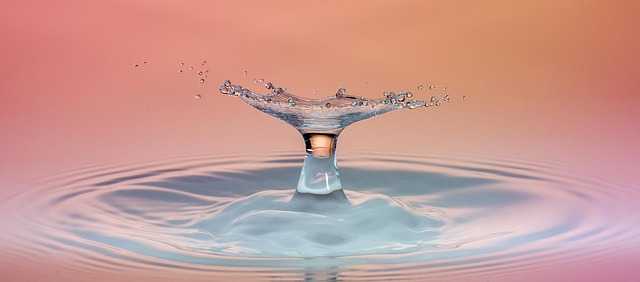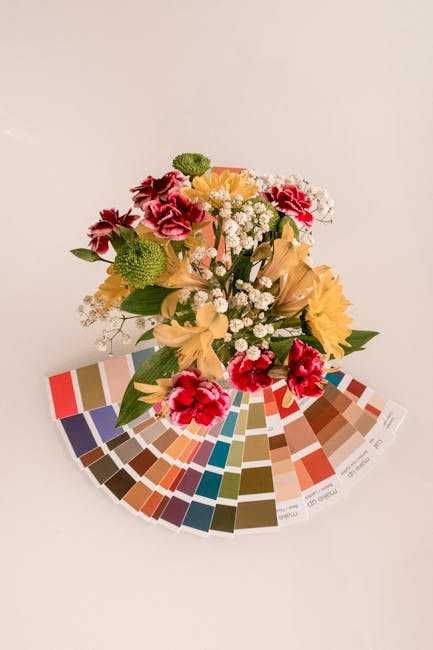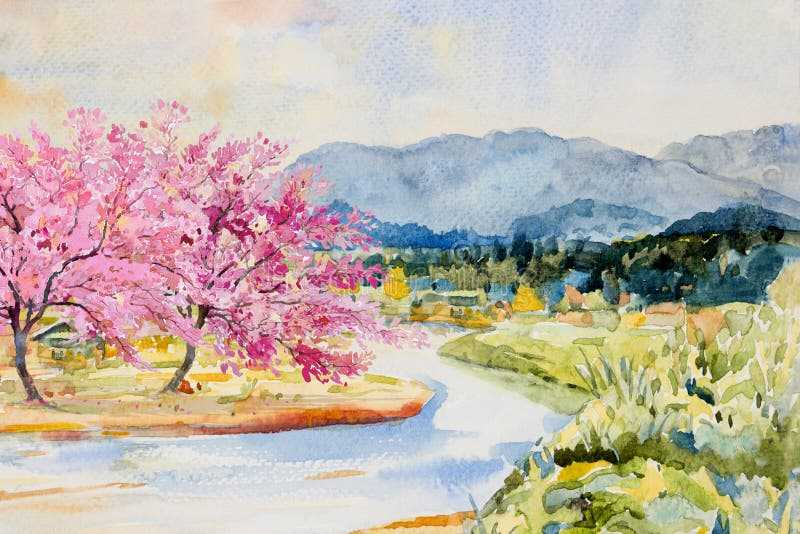Table of Contents
- Exploring the Emotional Impact of Landscape Paintings
- Techniques to Capture Natural Beauty in Landscape Art
- Choosing the Right Color Palette for Outdoor Sceneries
- Showcasing Landscape Paintings in Your Home Décor
- Q&A
- Final Thoughts


Exploring the Emotional Impact of Landscape Paintings
Landscape paintings serve as a profound conduit for the viewer’s emotions, encapsulating the beauty and brutality of nature. Each brushstroke can evoke a myriad of feelings, from serene tranquility to overwhelming nostalgia. Artists often employ color, composition, and light to convey specific moods; for instance, vibrant colors may evoke joy and warmth, while darker hues can instill feelings of melancholy and reflection. The choice of scenery—whether it be a bustling cityscape, a peaceful countryside, or a rugged mountain range—also significantly alters emotional reception.
Consider how different elements of a landscape can resonate emotionally. The gentle curves of a rolling hill might inspire a sense of peace, while jagged mountain peaks can provoke admiration and awe. The time of day depicted in a painting clearly plays a crucial role in this emotional dialogue. A sunrise may symbolize hope and renewal, while a sunset can indicate closure or the nostalgia of fleeting moments. This interplay between visual elements and emotional response creates a unique experience for each viewer, sparking personal connections and reflections.
Art therapy research indicates that engaging with landscape paintings can significantly reduce stress and anxiety levels. By immersing oneself in nature through art, individuals can foster a sense of escapism, allowing their minds to drift away from everyday pressures. In various studies, participants reported feelings of calm after viewing serene landscapes, suggesting the therapeutic potential inherent in this genre. Nature’s beauty, filtered through the artist’s lens, can serve as a powerful balm for the soul.
| Element | Emotional Response |
|---|---|
| Color | Warmth, Joy, Sadness |
| Composition | Calm, Tension, Reflection |
| Time of Day | Hope, Nostalgia, Closure |
| Subject Matter | Adventure, Peace, Awe |
Ultimately, landscape paintings act not only as visual representations of nature but also as emotional landscapes themselves. Just as one can find solace in the outdoors, viewing these artworks allows individuals to engage with their own inner landscapes. The emotional impact of a landscape painting can vary greatly, influenced by the viewer’s personal experiences and emotional state at the time of viewing. Thus, each encounter with a landscape painting is unique, inviting introspection and emotional exploration.
Techniques to Capture Natural Beauty in Landscape Art
To truly capture the enchanting essence of nature in landscape art, artists often employ a blend of techniques that enhance the viewer’s connection to the scene. Color theory plays a critical role in this endeavor. Understanding how colors interact can help create mood and depth. For instance, warm hues can convey a sense of warmth and tranquility, while cooler tones evoke calmness. Combining complementary colors can also bring elements within the landscape to life, immersing the viewer in the beauty of the environment.
Another vital technique is perspective. Utilizing a variety of perspective techniques, such as aerial and linear perspective, can create a more realistic representation of landscapes. Artists often manipulate the size and placement of elements to draw the eye towards the focal point, adding a sense of depth and dimension. Foreground, midground, and background elements provide layers that invite the viewer to explore every detail of the artwork, enriching their overall experience.
Texture is equally significant in landscape painting. Using a variety of brush strokes or even mixed media can mimic the natural textures found in a landscape. For example, a dry brush technique can express the roughness of cliffs, while smoother strokes can capture the fluidity of a gently flowing river. Here are some methods to consider:
- Impasto: Thick application of paint to create pronounced textures.
- Glazing: Layering thin washes of color for depth and luminosity.
- Scumbling: Rubbing a lighter color over a dry brush layer to soften edges and create atmosphere.
Lastly, incorporating light and shadow can transform a basic landscape into a captivating piece of art. Understanding how light affects colors and forms allows an artist to convey the time of day and weather conditions effectively. By capturing the interplay between light and shadow, artists can highlight specific areas of interest while adding a dynamic quality to the entire composition. A careful study of natural light, such as the soft glow of sunrise or the dramatic shadows of sunset, can enhance the emotional impact of the artwork, making it resonate with the viewer on a deeper level.


Choosing the Right Color Palette for Outdoor Sceneries
When undertaking the task of capturing outdoor landscapes on canvas, the selection of a color palette is paramount. The hues you choose can dramatically alter the mood, emphasize specific elements, and highlight the unique characteristics of the scenery. Drawing inspiration from nature itself can be a great starting point. For instance, vibrant greens and earthy browns evoke a sense of tranquility, while brilliant oranges and deep reds can infuse energy and warmth into your piece. It’s essential to consider the time of day and weather conditions, as they can influence color temperatures and saturation throughout the landscape.
One effective technique for selecting a harmonious color palette is to utilize the color wheel. By identifying complementary and analogous colors, you can create visual coherence in your artwork. Incorporating colors from adjacent sections of the wheel will yield a calming effect, while choosing opposing colors will introduce contrast and excitement. Additionally, consider limiting your palette to three to five main colors. This approach not only simplifies your process but also ensures that your painting retains a focused aesthetic. A well-structured palette can enhance the overall composition and guide the viewer’s eye across the canvas.
Moreover, it’s beneficial to experiment with cool versus warm colors, as each can dramatically influence the viewer’s perception. Cool colors, like blues and purples, can make a scene feel spacious and serene, often reminiscent of misty mornings or tranquil lakes. On the other hand, warm colors like yellows and reds bring a sense of warmth and intimacy, perfect for portraying sunset landscapes or sunlit fields. By juxtaposing these temperatures, you can create depth and dimensionality in your artwork, enriching the narrative of the landscape you wish to convey.
| Color Palette Theme | Color Examples | Mood/Ambiance |
|---|---|---|
| Nature | Greens, Browns, Beiges | Tranquil |
| Sunset | Oranges, Reds, Yellows | Warmth |
| Misty Morning | Blues, Whites, Grays | Serene |
| Autumn | Ochre, Maroon, Gold | Crisp |
Ultimately, the right color palette can transform a simple landscape painting into a captivating visual story. By engaging with the emotions associated with specific colors and thoughtfully applying them to your work, you can create scenes that resonate deeply with viewers. As you continue to explore the rich terrain of outdoor sceneries, let your color choices reflect the beauty of the natural world, and enjoy the process of bringing those colors to life on your canvas.


Showcasing Landscape Paintings in Your Home Décor
Integrating landscape paintings into your home décor transforms any space into a serene retreat. The beauty of nature depicted in these artworks can evoke feelings of tranquility and inspiration. Consider placing a stunning landscape piece in prominent areas such as the living room or hallway. These paintings can serve as focal points, drawing the eye and inviting conversation. Choose large canvases for an impactful statement or smaller pieces to create a cohesive gallery wall.
When selecting landscape artworks, think about the color scheme of your existing décor. Harmonizing the hues in the paintings with your interior design can create a seamless flow throughout the space. Soft pastels are perfect for a calming effect, whereas vibrant colors can energize and enliven a room. Here are some tips to match colors effectively:
- Choose a dominant color from the painting to match furnishings.
- Use accent colors to highlight smaller decor items.
- Consider the overall mood you want to evoke in the space.
Another innovative way to display landscape paintings is by combining them with natural elements. Incorporating plants, stones, or wood in your decor can enhance the organic feel of the artwork. A landscape painting paired with potted succulents or hanging ferns can create a cohesive theme that brings the outdoors in. Consider these arrangements:
| Arrangement Type | Suggested Pairings |
|---|---|
| Gallery Wall | Mix various sizes of landscape paintings with framed photos. |
| Corner Nook | Position a large painting next to tall indoor plants. |
| Above Furniture | Hang a striking landscape over a console table with works of art. |
please remember that adjusting the lighting can dramatically affect how landscape paintings are perceived in your home. Natural light is optimal, but strategically placed accent lights can also enhance colors and details. Experiment with different lighting options:
- Soft, warm lights for an inviting atmosphere.
- Directional spotlights to highlight specific details.
- Dimmer switches to adjust brightness according to time and mood.
Q&A
Q&A: Understanding Landscape Paintings Q: What defines a landscape painting? A: A landscape painting captures natural scenes, primarily focusing on the depiction of nature, such as mountains, valleys, trees, rivers, and fields. These works aim to convey the beauty of the outdoors, often showcasing a harmonious relationship between natural elements and light. Q: What are the different styles of landscape painting? A: Landscape painting has evolved through various styles over the centuries. Some notable styles include:- Impressionism: Focuses on capturing the effects of light and color. Artists like Claude Monet often portrayed scenes with quick brushstrokes and vibrant palettes.
- Romanticism: Emphasizes emotion and the sublime in nature, often exploring dramatic skies and rugged landscapes.
- Realism: Aims for accurate depictions of nature without idealization, highlighting everyday settings and scenes.
- John Constable: Known for his depictions of the English countryside, showcasing natural beauty with romantic flair.
- Caspar David Friedrich: A key figure of Romanticism, celebrated for his emotionally charged, atmospheric landscapes.
- Vincent van Gogh: Famous for his bold colors and expressive swirls, capturing the essence of landscapes in his unique style.
- Layering: Building depth through multiple layers of paint, creating a sense of distance and realism.
- Color Theory: Understanding how colors interact to capture the light and mood of a specific time of day.
- Brushwork: Using different brush types and techniques—like stippling or glazing—to achieve texture and detail.
- Observe Lighting: Notice how light transforms the landscape and sets the mood.
- Explore Composition: Look at how artists arrange elements to guide your eye through the scene.
- Connect Emotionally: Reflect on how the painting makes you feel and what memories or thoughts it evokes.
